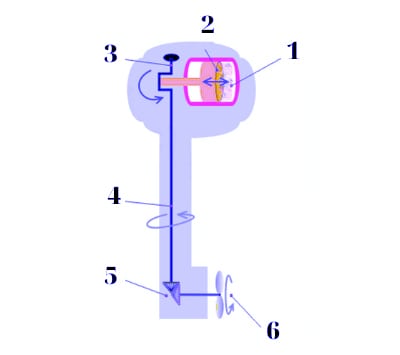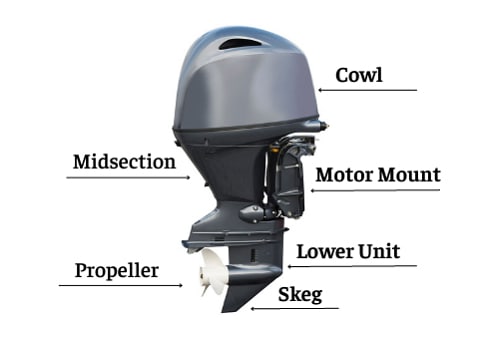
An outboard motor works a lot like a car engine, but with design modifications to adapt to a marine environment and meet the unique challenges of vertical mounting, reports Boating Basics.
An outboard boat engine works by powering a propeller that moves the vessel. How it manages to do that involves the creation of power and motion that specific components transmit and convert from the cylinder to the prop.
What Is an Outboard Motor?
Essentially, it’s a motor that powers a propeller that’s responsible for moving a boat. Think of how car engines are designed. Take out a few cylinders and replace the gearbox with a prop, and voila, it becomes an outboard.
Nowadays, outboard motors come in plenty of shapes and forms, but what’s certain is that they’re almost always mounted on the transom. The classic look of this type of boat motor immediately stands out with its long cylindrical body that bears a “head” which houses the engine.
One of the modern offerings by Honda Marine still has this look, as depicted in the picture below.

More powerful and innovative motors sometimes sport a bulkier, aptly heavy-duty appearance, thereby challenging the norm.
The Components of an Outboard Motor

On the whole, we need to divest an outboard motor and look at its intricate engineering to intimately know how it works. This starts by singling out every component.
- Propeller – responsible for moving the boat through the water.
- Starter motor – can either be electrically or manually triggered to start the motor.
- Gearbox – contains the clutch and gears responsible for moving the prop.
- Pistons – move back and forth to transfer energy to the crankshaft.
- Fuel pump – transfers fuel the carburetors need to function.
- Carburetors – combine air with fuel to form explosive mixtures used in each cylinder.
- Crankshaft – collects power from the pistons to maintain speed.
- Flywheel – accumulates momentum to maintain speed.
- Camshaft – allows fuel in and also functions as an exhaust.
- Cylinders – house the pistons and fuel tank that produce power. They come with spark plugs that ignite fuel.
- Anti-ventilation and anti-cavitation plate – prevents these two issues that may damage the prop over time.
- Mounting bracket – where the motor is installed. It’s designed to allow the motor to swivel up or down.
- Cooling system – draws water to maintain optimal temperatures for the prop’s engine.
Did you subscribe to our newsletter?
It’s free! Click here to subscribe!
Source: Boating Basics





















